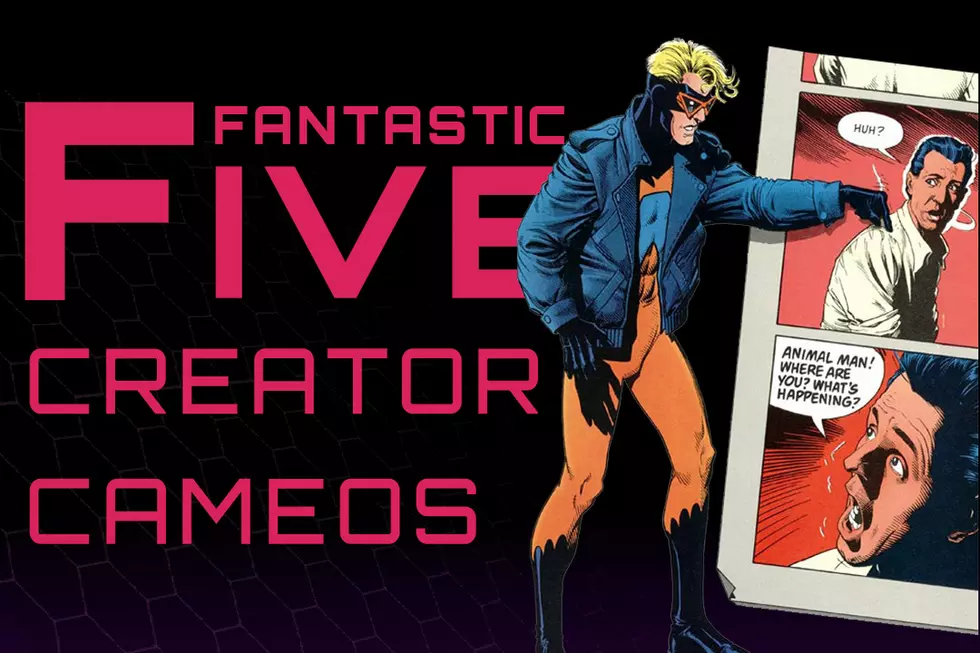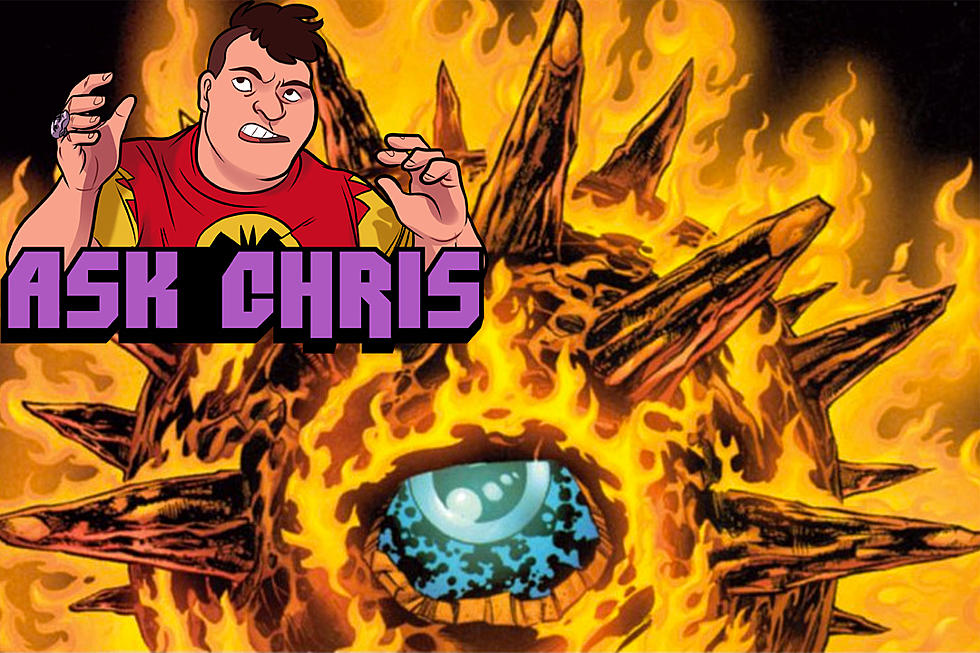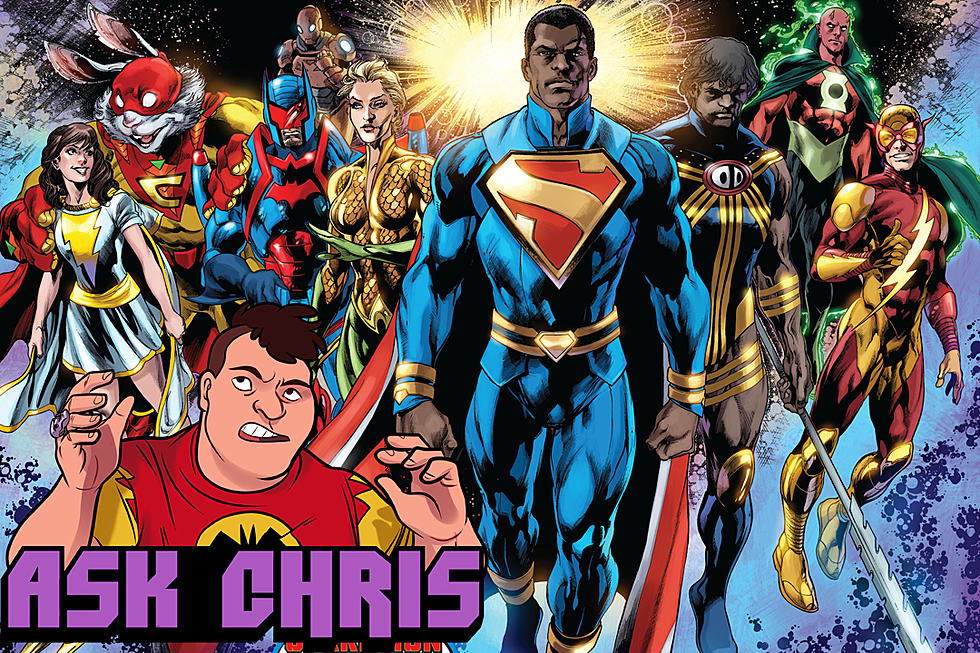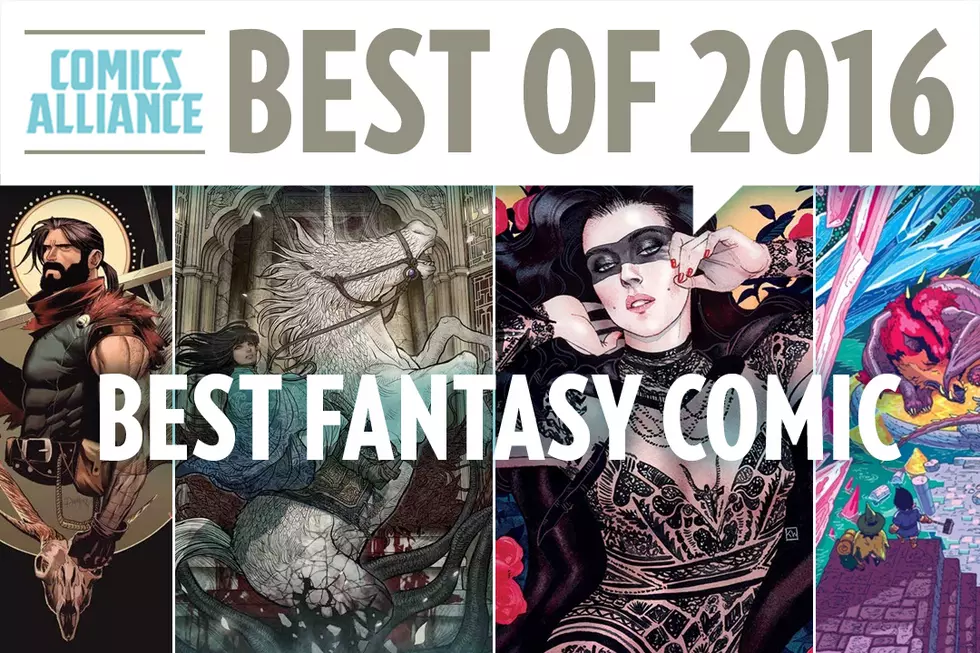
The Issue: Empathy for the Henchman in ‘The Invisibles’ #12 (1995)
Welcome to The Issue, a new feature examining some of the strangest, most interesting and most distinctive single issue comic stories ever to grace the medium. You know the ones; silent issues, sideways issues, backwards issues; the comics that try to do something different with the form, and stand out from the series they belong to.
As October is Villain Month here on ComicsAlliance, we're taking a look at an issue focusing on a character who is nominally one of the bad guys, though the story tries to unpack what that really means. The issue is The Invisibles #12, 'Best Man Fall', by Grant Morrison and Steve Parkhouse.
Coming at the end of a short run of one-shot stories, 'Best Man Fall' eschews the book's main cast and their sci-fi-spy-thriller adventures, and returns to a character we met for a single page a dozen issues earlier. That character is Bobby Murray, one of the evil Conspiracy's faceless goons (figuratively and then, thanks to King Mob's hand cannon, literally), who got dispatched in the very first issue.
In 25 short pages, the issue flashes through Bobby's entire life. A child bullied by his older brother, a wounded soldier in the Falklands, a father to a severely disabled child. Son to an abusive father, husband to an abused wife. We visit funerals, hospital rooms, battlefields. It's not exactly 'This Is Your Life' material.
The effect may remind contemporary readers of Batman #682-683, written by Morrison over a decade later. That issue jumps between twisted versions of Batman's history, every trauma Bruce ever experienced and, in broken Elseworlds, a few he didn't. Jason. Barbara. Bane. Alfred. It's all revealed to be an evil scheme intended to harden Darkseid's vat-grown army into clones of Batman by running them through a simulation of Bruce's life – and inevitably, faced with all of his memories at once, it breaks them.
'Best Man Fall' comes within inches of doing the same thing to the reader. Some of the moments it pulls in --- the wounded soldier, the cycle of abuse, the death of a childhood dog --- are almost familiar enough to be stock elements. With the sheer amount of misery that the issue chucks at us, tragedies piling on top of tragedies, the whole thing very nearly tips over into farce.
But the details feel real. The pain of a pebble-dashed wall to the knees, the jingle for the Standard-brand fireworks that fascinate Bobby, the foraging for unexploded duds the next morning; these feel like they could be moments lifted from Morrison's own childhood. Honestly, speaking as a fellow Brit some 30 years Morrison's junior, they almost feel like they could be lifted from mine.
That feeling is driven home by Parkhouse's art. A veteran of 2000 AD and the Doctor Who comics of the '80s, Parkhouse's style is less detail-intensive, less 'realistic', than any of the artists on preceding issues. His cartoony faces leave room for the reader to imprint themselves on the characters. At moments, they maybe even inspire a comforting nostalgia.
There are panels where the young Bobby resembles Oor Wullie, star of a family-friendly Scottish comic strip of the same name. As an adult in his military regalia, he could almost be the star of a war story in a boy's own adventure comic like the Eagle or Valiant; British comics, the kind I remember discovering in stained, broken-spined annuals at my grandparents' house as a relic of my dad's own childhood – and no doubt, a mainstay of Bobby's too.
All of which combines to gives 'Best Man Fall' the ring of real human experience. It's probably no surprise that the tiny tragedies are the ones that bite most. The wee Bobby clutching his teddy bear in a dark bedroom, as his parents fight in the next room, whispering, “It'll be alright. I won't let anybody hurt you”. The same bear seen, a few pages earlier, dumped in a bin.
The comic flits between these moments, decades apart, out of order. Initially the page is used as a discrete unit, one page per memory, but eventually everything starts to overlap and bleed over. Panels from one scene are dropped in the middle of another, jumping decades forwards or backwards in a single panel gutter. Because this is a comic, with all the information laid out flat in front of us, we can flick back and forth and experience all these memories side-by-side.
It's a believable reconstruction of a feverish mind free-associating between memories, which puts the reader not only in Bobby's shoes but his head. It's hard to resist empathizing with him, even though the comic won't let us forget that he beats his wife. Not because Bobby is a good person, but because he feels like a real one.
So, when he runs from the locker room where he was discussing Baywatch with a mate and straight into an action scene from issue #1, still grumbling about overtime, and King Mob points an automatic pistol at his face and pulls the trigger, it's genuinely shocking.
Beyond that single remarkable moment, though, what makes 'Best Man's Fall' really interesting is that it sits within the larger 60-issue continuum of The Invisibles as a whole. The story is given light and shade by the issues that came before, and casts its own shadow those that come after.
At this point in the series, exactly one year after it began, every threat the Invisibles have faced has been anonymous. We've seen balaclava-wearing Myrmidon troopers; Cyphermen in their insectoid bondage gear like extras from a Marilyn Manson video; Orlando whose face is constantly obscured by scratchy pencil lines; the hired security guards of the first issue in helmets with huge visors that hide the fact that they're people underneath. This works to 'other' the villains, so that when the fighting begins, we can appreciate the stylish ultra-violence and King Mob's one-liners, rather than thinking about the consequences.
This already starts to turn around in the previous issue, with the introduction of long-running villain Sir Miles, but it's 'Best Man Fall' that really breaks the convention. In fact, at the moment of confrontation, it's explicitly inverted. Bobby's panicked face is visible through his visor, while King Mob's remains hidden behind his flamboyant war gear, an echo of the gas-mask creature Bobby feared as a child.
If this was the first issue of The Invisibles you ever picked up, you'd be unlikely to see King Mob as the hero of the book, and Bobby as the baddie. It's one of the book's grand themes --- that the world isn't as simple as good versus evil --- summed up in a pair of near-silent panels. In 'Best Man Fall', the devil really is in the details.
More From ComicsAlliance









